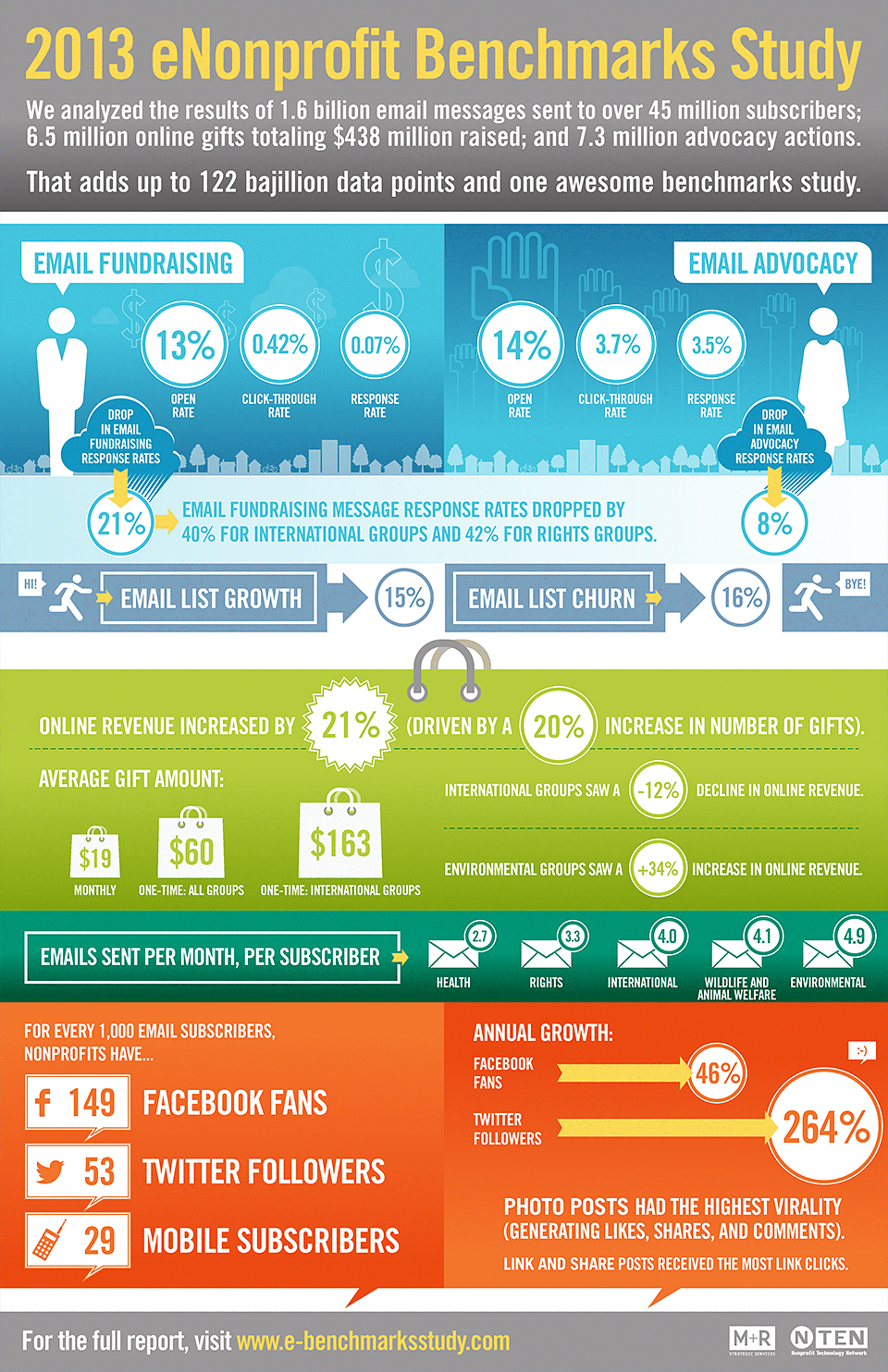The seventh annual eNonprofit Benchmarks Study by M+R Strategic Services and NTEN has been released. This report examines the online performance of some of the country’s leading nonprofits, including American Red Cross, Sierra Club, AARP and the Human Rights Campaign to gauge the latest trends in online fundraising and advocacy.
The results have a “It was the best of time, it was the worst of times…” feel to it. There was a rise in online revenue. There was a drop in click through rates. Monthly giving programs have grown. Donation page completions have declined.
Here are some key findings:
- A 21 percent increase in online revenue overall from 2011, with only International groups seeing a decline in online giving.
- A sharp decline in certain key email metrics – such as a 14 percent decline in click-through rates for advocacy messages and 27 percent decline for fundraising messages. This trend was driven mostly by the decline in click-through rates among Rights and International groups. Advocacy messages sent on behalf of Environmental groups performed best.
- Since 2011, online monthly giving grew by 43 percent – more than twice as fast as one-time giving. Although still a small percentage of overall giving, sustaining gifts now account for 18 percent of revenue for International groups.
- Email list sizes continue to grow for all sectors and sizes, up 15 percent in 2012. This trend was greatest for Wildlife and Animal Welfare groups, which grew their email lists by 32 percent from 2011.
- The growth of social media audiences outpaced email lists in 2012, growing an average of 46 percent on Facebook and 264 percent on Twitter. However, Facebook continues to be king for connecting with supporters on social media, reaching 149 Facebook fans for every 1,000 email subscribers.
So email lists are growing, and social media followers are up too, which tells me that people want to connect with the causes they care about. Other online programs and giving are increasing as well. So why are email response rates down?
According to the report, part of it may be a shortage of legislative battles this year, or “the lack of a major international humanitarian crisis in the news may have hurt responsiveness for some organizations,” (which I would argue is actually good news, right?). The failure of nonprofits to clean up their email list may also explain the decline. The more bad or unresponsive email addresses you send to, the worse your response rates will be.
It may also be the lack of compelling, supporter-centered email copy that makes the reader want to do more. There may also be a disconnect between an organization’s email campaigns, their social media updates and other online channels.
So what about your nonprofit? Have you seen your email response rates go down? Do you even track your email click through rates?
These types of reports give us great insight into what’s going on in the world of nonprofit communications. BUT these are just the results of the organizations surveyed and don’t always hold true across the board. Your organization needs to track these metrics and pay attention to the ups and downs of what’s happening with your organization.
- Is your email list growing? What about social media?
- Are your emails getting opened?
- Are the links in those email being followed?
More results from the survey:





![12 Things You Can Stop Doing Right Now [Infographic]](https://www.nonprofitmarketingguide.com/wp-content/uploads/2025/01/Stop-Doing-2025-Info-hung-up-500x383.png)

